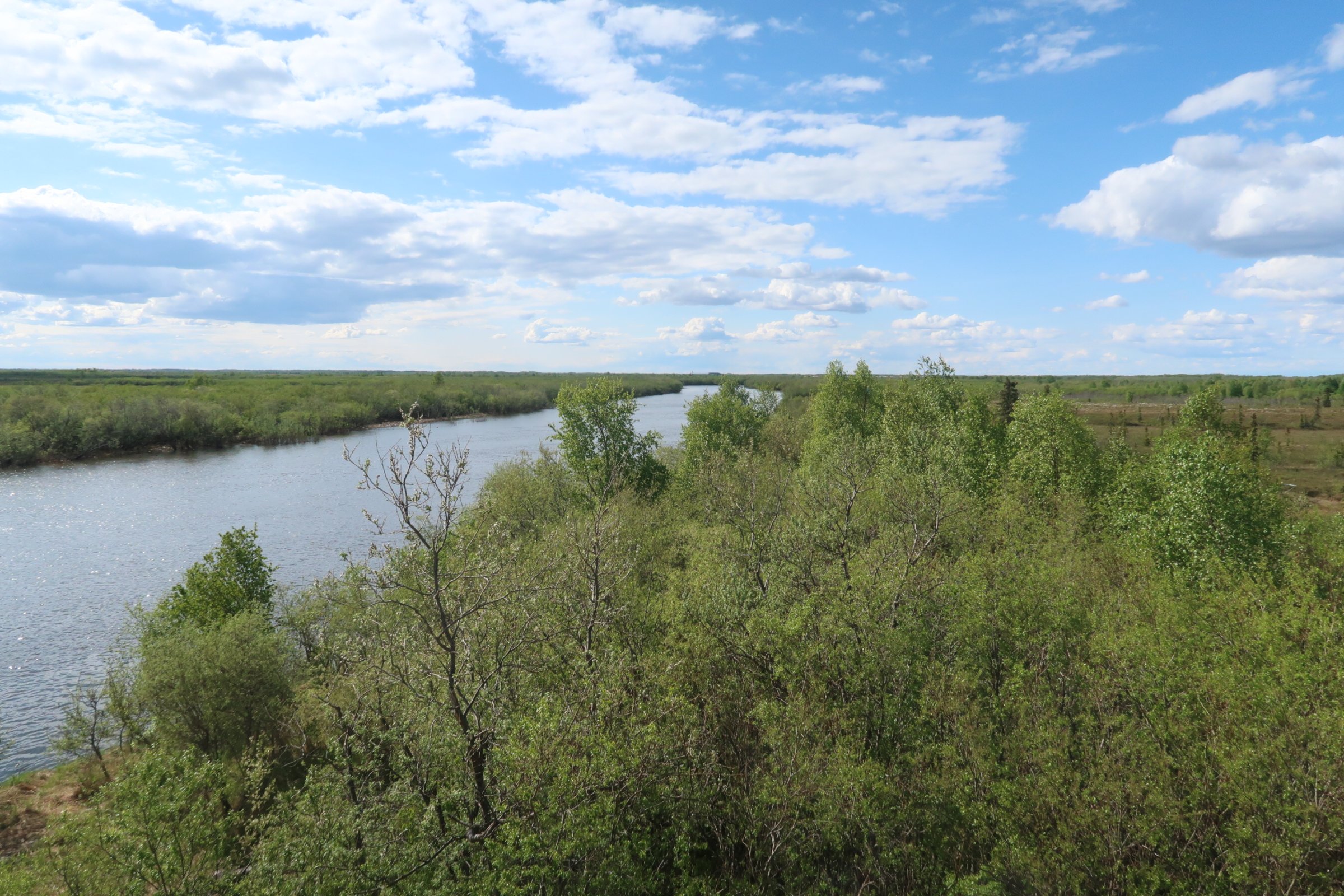Kwethluk River Smolt Outmigration Study
The Kwethluk River Freshwater Productivity, or Smolt Outmigration, study counts juvenile salmon smolt as they migrate out of the Kwethluk River system and towards the Bering Sea. Fishermen and Western scientists alike have noticed that environmental changes within the Kuskokwim, such as warming water temperatures and heavier rains and floods, might be harming salmon populations. This study aims to understand how these environmental variables affect salmon health, and to predict future numbers of returning adult spawners based on out-migrating juvenile salmon abundance.
The Kwethluk River is historically one of the most productive salmon tributaries within the Kuskokwim River watershed. A similar freshwater juvenile productivity study was run at this site from 2015 to 2018 by U.S. Fish and Wildlife Service. In addition, the Kwethluk River weir, located just downriver from this project site, is used to count the number of adult salmon headed upriver to their spawning grounds. These reasons make the Kwethluk an excellent site to monitor salmon abundance and migration so we can more thoroughly understand the in-river dynamics affecting our fish.
Fish technicians work the screw trap and identify salmon smolt. Photos by Boyd Blihovde.
To count juvenile salmon as they out-migrate, our field technicians use a rotary screw trap with a live box to collect, identify, and enumerate salmon smolt as they travel downstream. Fish length and weight data will be collected to evaluate smolt health. The fish will also be marked with fin clips for a mark-recapture study. Neither the screw trap nor the mark-recapture techniques harm or kill the fish.
In addition to collecting data from the fish, environmental data, including water temperature and water stage, are gathered year-round by temperature and pressure loggers.
For more information about the study, read our project proposal to AYK SSI here.





